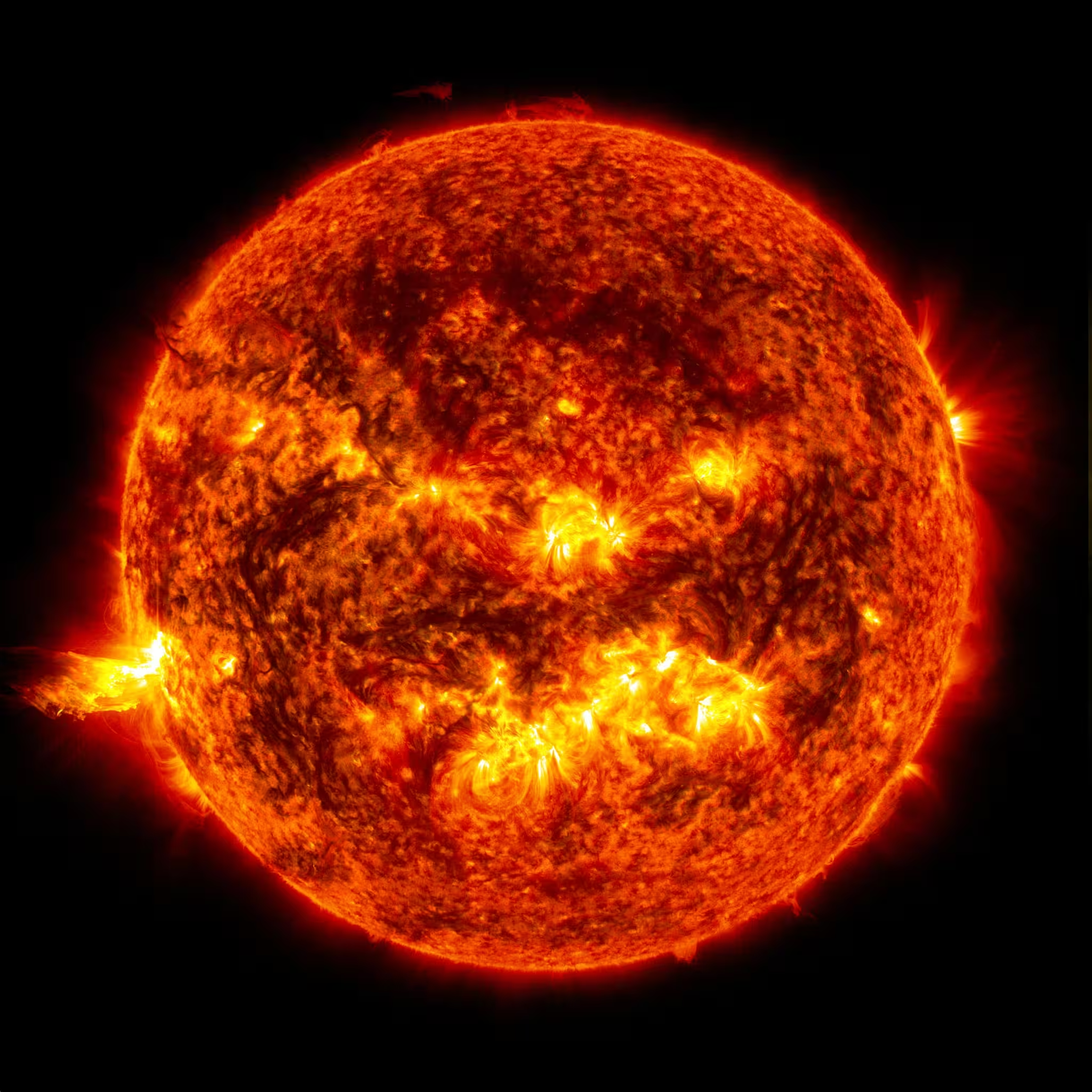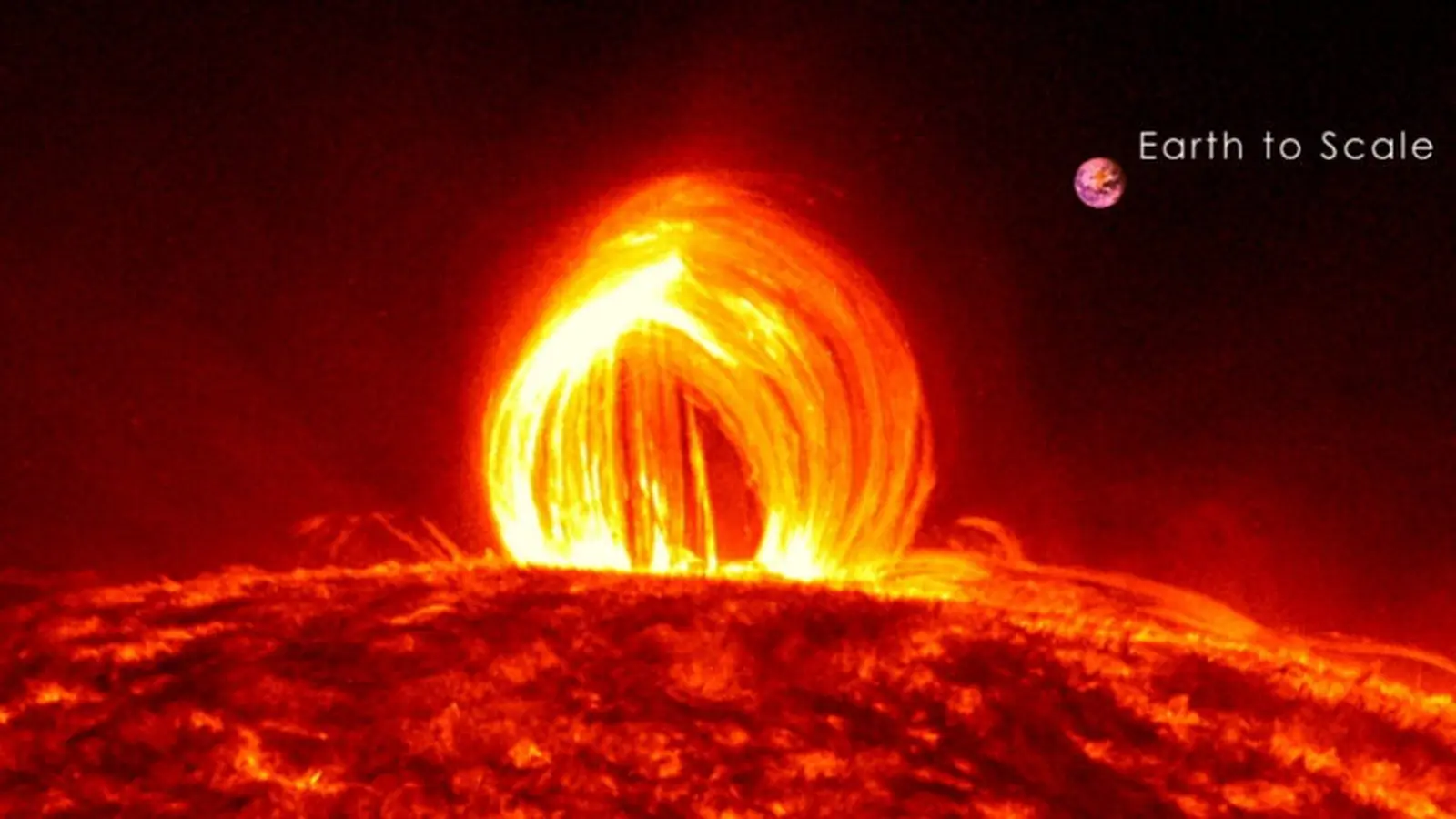6 Minutes
Coronal rain—cool, dense blobs of plasma falling along the Sun’s magnetic loops—has puzzled solar physicists for decades. New simulations from researchers at the University of Hawai‘i suggest shifting flows of heavy elements may be the missing ingredient that triggers these spectacular downpours.
A different kind of weather: what is coronal rain?
When we talk about "rain" on the Sun, we don’t mean water. Coronal rain is composed of ionized gas—plasma—condensing and falling from the hot solar corona back toward the surface. Because plasma carries electric charge, these condensations trace magnetic field lines, creating bright, arching streams that can span distances equivalent to multiple Earth diameters.
Observers often see coronal rain following strong solar activity such as flares and eruptions. The phenomenon exposes hidden structures of the Sun’s magnetism and gives scientists a rare, dynamic probe of coronal physics. Yet despite decades of observations, exactly how and how fast the plasma cools and condenses into falling blobs has remained uncertain.
New simulations: elements on the move
Researchers at the Institute for Astronomy (IfA), University of Hawai‘i, modified standard coronal models by allowing elemental abundances—iron, silicon, magnesium and other species—to vary in space and time. Previous simulations typically assumed these abundances were fixed throughout the corona. The IfA team found that when elemental flows are permitted to change, coronal rain can form much faster than earlier models predicted.

In their runs, localized changes in element concentrations produced spikes in radiative energy loss at the apex of coronal loops. In plain terms: when heavier elements concentrate in a region, that patch of plasma radiates energy more efficiently, cools rapidly and draws more material into the loop. That inflow accelerates the cooling in a runaway feedback that produces dense condensations—the seeds of coronal rain—within minutes rather than hours.
"At present, models assume that the distribution of various elements in the corona is constant throughout space and time, which clearly isn't the case," explains Luke Benavitz, an astronomy graduate student at IfA and co-author of the study. "When the model lets elements like iron shift with time, the simulations finally reproduce the quick onset of coronal rain we actually observe."
Why changing abundances matter for radiative cooling
Atomic species such as iron and silicon have many electronic transitions that act like radiators when the plasma cools. The more of those atoms present, the greater the radiative losses at particular temperatures. In a loop top already marginally balanced between heating and cooling, even modest enrichment of heavy elements can tip the scales toward rapid cooling.
This mechanism complements other proposed triggers—such as impulsive heating from flares or thermal instabilities—but it is notable because it links coronal rain directly to compositional dynamics. If elemental flows are indeed significant and time-variable, that challenges a basic assumption used in many coronal-heating and solar-atmosphere models.
Implications for coronal heating and solar forecasting
The discovery has two practical implications. First, it suggests that understanding the Sun’s heating problem—the question of why the corona is millions of degrees hotter than the surface—may require a closer look at elemental transport and fractionation processes. Second, if changing abundances help trigger coronal rain and rapid cooling, they may influence the timing and morphology of mass flows that feed the lower atmosphere and the solar wind.
"This discovery matters because it helps us understand how the Sun really works," says Jeffrey Reep, IfA astronomer and co-author. "We might need to go back to the drawing board on coronal heating, so there's a lot of new and exciting work to be done."
What the models still need
Although the new simulations reproduce faster rain formation, they do not yet capture the full complexity of the real Sun. The corona is threaded by multi-scale magnetic fields, driven by turbulent motions in the photosphere, and subject to episodic heating. Observations combining spectroscopy, high-resolution imaging and time-domain measurements will be essential to validate how elemental abundances change and where.
Upcoming solar missions and instruments that measure composition and temperature across small spatial scales—combined with improved models that include flows, waves and magnetic reconnection—will help close the loop between theory and observation.
Expert Insight
"This study is an important reminder that the corona is not chemically static," says Dr. Mira Santos, a solar physicist at a major research laboratory (commentary provided for context). "Allowing elemental abundances to evolve naturally connects microscopic atomic physics with macroscopic dynamics we can actually see. The result is a plausible, testable pathway from composition changes to observable coronal rain."
Where scientists go next
Researchers will now seek direct observational signatures of time-varying elemental abundances in coronal loops—measurements that require high-cadence spectroscopy and careful calibration. If these abundance variations are confirmed, they will be folded into broader models of the solar atmosphere and the solar wind, improving our ability to predict space-weather impacts driven by coronal mass ejections and flares.
For the rest of us, the idea that it literally "rains" on the Sun—an alien weather made of superheated plasma tracing magnetic arches—remains a powerful visual. The new work brings us a step closer to explaining not just the spectacle, but the underlying chemistry and physics that choreograph it.
Source: sciencealert
Comments
Marius
is this even true? if elemental flows change fast enough to cool loops, why haven't we seen clear spectral shifts yet... idk, seems like something observations should catch
astroset
Whoa, coronal rain in minutes?! Mind blown, composition shifts sound plausible, but I'd love real-time spectra to confirm it. Hurry telescopes!!


Leave a Comment